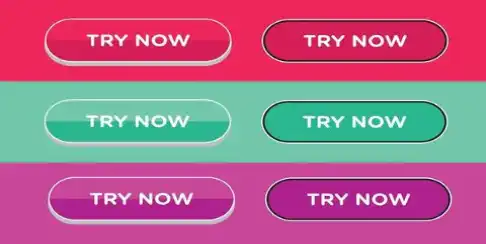Website User Experience in 2019: Everything You Need to Know
5 MIN READ

In today's world, user experience (UX), is one of the most important aspects of sustainable business growth. Why?
For one thing, it is becoming easier and easier for competing companies to provide products or services that are basically equivalent to one another. This means that overall customer experience is becoming proportionally more significant as a differentiating factor in purchase decisions.
Put another way, customers simply don't want to deal with companies that frustrate or confuse them. We already have enough problems in life; trying to buy a pair of shoes or a smartphone accessory shouldn't be one of them.
"Okay, great," you may say, "but really, how important is good UX for my business?" Check this out: research shows that, on average, every dollar invested in UX yields a return of $100 (!!!)
Yeah, it's kind of a big deal.
So what can be done to ensure that your company offers a website user experience that will keep your customers coming back for more? The following information will cover some best practices for UX in 2019, which will ultimately show you how to generate more leads. First, though, let's briefly discuss what UX actually involves.
What is UX?
Just to be clear, user experience goes beyond user interface (UI), or even usability. Whereas UI and usability primarily involve technical and practical aspects of web design, UX encompasses the entire customer experience, including every single interaction between the customer and the company.
Now, don't get us wrong: UI is extremely important and is a crucial part of UX. However, a website could have excellent UI features, but still contain glaring UX-related flaws. For instance, a user-friendly, intuitive database that contains incomplete or inaccurate information may rank high for UI, but poor for UX.
Okay, so now that we've got that out of the way, what are some UX practices that you should consider implementing this year?
Best Practices for UX in 2019
Good, clean UX design is important for both enterprise level companies and small to medium-sized businesses. Just as one example, some 70% of small business websites fail to display clear CTA buttons. In contrast, something as simple as adding an arrow icon to your CTA button(s) can increase the click-through rate by 26%.
While there are many components to effective UX design, here are 3 basic principles that can help you improve your website's overall design and functionality:
1. Make Your Information "Scannable"
Let's be real: people don't read anymore. They can read, sure, but they certainly don't want to do so. (It's called "aliteracy," in case you were wondering.) Heck, if you've made it this far into the post, you deserve a gold star and a cookie, because your attention span is about 20 times longer than the average Internet user.
What does this mean in terms of your website user experience? It means that you need to break up the information displayed on your web page into easily digestible, eye-catching chunks. Make liberal use of visuals and infographics. Keep paragraphs short, maybe 3-5 sentences maximum.
Remember: when customers visit your site, they aren't expecting War and Peace. Keep it simple, and make it easy for them to find that special bit of information that they need for their purchase decision.
2. Balance Creativity with Usability
Creativity is a good thing in web design. A healthy dose of artistry can help to differentiate your company from your competitors, which will generate more leads for you.
However, don't go overboard with your artistic impulses. Users are familiar with certain conventions of web design; for instance, the hamburger menu, the navigation bar, the Contact button, etc. Flipping such conventions on their head may be a creative move, but it can also frustrate your customers, alienate casual browsers, and ultimately lose business.
Generally, it's much better to keep certain standards in place, so that users can enjoy a certain level of comfort when navigating unfamiliar surroundings. The bottom line is, be balanced with creative touches, and don't sacrifice usability on the altar of artistry.
3. Present a Logical Visual Hierarchy
There are certain elements of your website that are more important than others. In order to highlight the more important elements, pay close attention to your website's visual hierarchy.
For example, you could make the most important CTA button much larger than its surroundings. You could make it the visual focal point of the page. You could embellish it with a graphic, or a specially designed font. Don't leave your users guessing as to where they should be looking.
Examples of Good (and Bad) UX
There are innumerable examples of UX design scattered all over the Internet, ranging from awesome to mediocre to atrocious. We'll just take a simple example from 2 relatively small companies: Lazor/Office and the Interaction Design Foundation.
The Bad: Lazor/Office
At first glance, you may think that this site has everything going for it, such as a professional text font, sleek imagery, and a visible navigation bar. However, there is at least one significant UX design element that it's missing: discoverability.
In other words, the user has to guess what a click on one of the images in the site gallery will do. Furthermore, without some explainer text on the home page, the casual browser may even be confused as to what kind of company Lazor/Office actually is. While it may seem like a small thing, this adds a subtle layer of confusion to the whole experience and is sure to decrease conversion rate.
The Good: Interaction Design Foundation
The Interaction Design Foundation solves an analogous discoverability issue by simply placing a "View Course" bar at the bottom of each image in its gallery. It clearly labels each link on its page, so the user won't experience any confusion with regards to the available actions he or she can take.
While these contrasting case studies may seem to only present a small difference in quality of UX design, in an over-saturated online market, every little edge counts... and every UX misstep is magnified 10-fold.
Working with UX Experts
Good website user experience can increase your customer conversion rates, generate more leads, and increase revenues across the board. It is an absolutely essential part of a good marketing strategy and an effective sales program.
Still, you may hesitate to take a deep dive into overhauling your website without some backup. That's where MarComm comes in.
We are not just a design and marketing agency for hire; we are a growth agency. That means that we don't just work for you; we work with you to grow your business, expand your knowledge base, and lay the groundwork for your company's future.
If you'd like to learn more about what we do, and how we can help your business, reach out to us today.
Recent Posts

The Ultimate Guide to Nav Bar Design
A man walks into Navigation Bar to have a drink and get directions to a hotel....

Should I Use a Marketing Agency? - 3 Reasons to Outsource
Life is full of weighty decisions: which college to attend, who to marry, if...

Best Practices for CTA's That Will Give You a Killer B2B Brand
Your B2B website is finally up and running and it's looking badass. Seriously....
